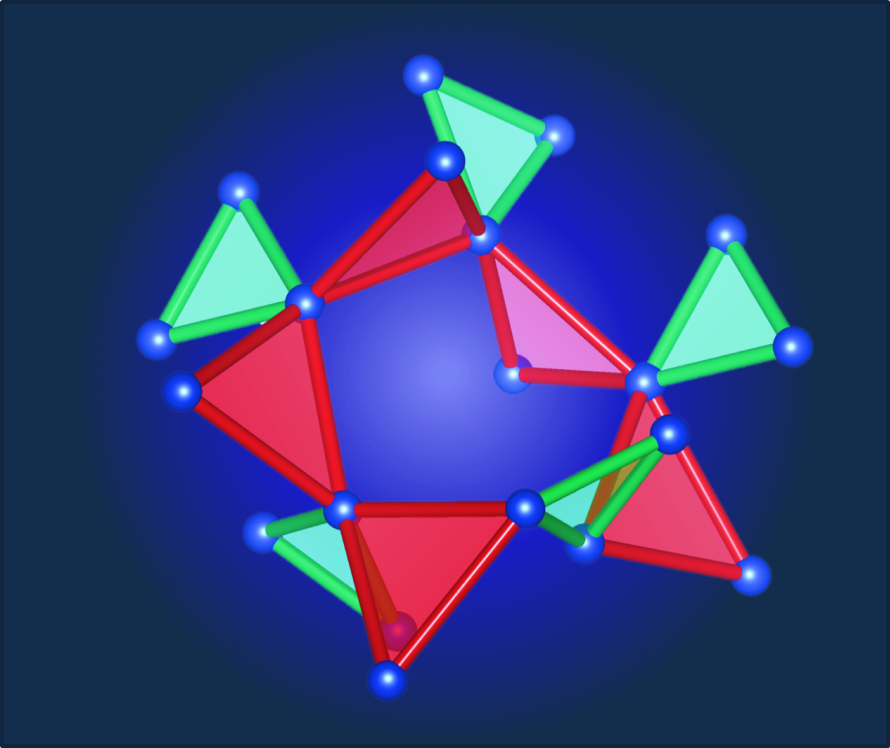May 12 2020
Quantum spin liquids could potentially be used for future information technologies. Until most recently, quantum spin liquids have often been discovered only in one or two dimensional magnetic systems.
 Two of the four magnetic interactions form a new three-dimensional network of corner-sharing triangles, known as the hyper-hyperkagome lattice, leading to the quantum spin liquid behavior in PbCuTe2O6. Image Credit: © HZB.
Two of the four magnetic interactions form a new three-dimensional network of corner-sharing triangles, known as the hyper-hyperkagome lattice, leading to the quantum spin liquid behavior in PbCuTe2O6. Image Credit: © HZB.
At present, under the guidance of scientists at Helmholtz-Zentrum Berlin (HZB), an international team of researchers has used neutron experiments at ISIS, ILL, and NIST to study the crystals of PbCuTe2O6.
The team discovered spin liquid behavior in three dimensions (3D), caused by what is called a hyper hyperkagome lattice. The experimental data was highly correlative with theoretical simulations performed at HZB.
Existing IT devices are developed based on electronic processes that occur in semiconductors. The next major advancement could be to leverage other quantum phenomena, such as interactions that take place between tiny magnetic moments in the material—what are called the spins. The quantum spin liquid materials could be the ideal candidates for such novel technologies.
Quantum spin liquid materials are very different from traditional magnetic materials since their magnetic interactions are dominated by quantum fluctuations. This is because geometric constraints in the crystal lattice inhibit spins from “freezing” together in a ground state—they are constrained to fluctuate, even at temperatures near absolute zero.
Quantum Spin Liquids: A Rare Phenomenon
Quantum spin liquids are rare and to date, they have been predominantly found in two-dimensional (2D) magnetic systems. 3D isotropic spin liquids are mainly found in materials in which hyperkagome or pyrochlore lattices are formed by the magnetic ions.
Led by HZB physicist Prof. Bella Lake, an international research team has currently analyzed samples of PbCuTe2O6, which exhibits a 3D lattice known as a hyper-hyperkagome lattice.
Magnetic Interactions Simulated
Prof. Johannes Reuther, a physicist at HZB, predicted the behavior of such a 3D hyper-hyperkagome lattice to have four magnetic interactions. He demonstrated that the system shows quantum-spin liquid behavior with a unique magnetic energy spectrum.
Experiments at Neutron Sources Find 3D Quantum Spin Liquid
The research team performed neutron experiments at ISIS in the United Kingdom, NIST in the United States, and ILL in France, thus establishing the extremely subtle signals of this estimated behavior.
We were surprised how well our data fit into the calculations. This gives us hope that we can really understand what happens in these systems,
Dr Shravani Chillal, Study First Author, Helmholtz-Zentrum Berlin
Journal Reference:
Chillal, S., et al. (2020) Evidence for a three-dimensional quantum spin liquid in PbCuTe2O6. Nature Communications. doi.org/10.1038/s41467-020-15594-1.